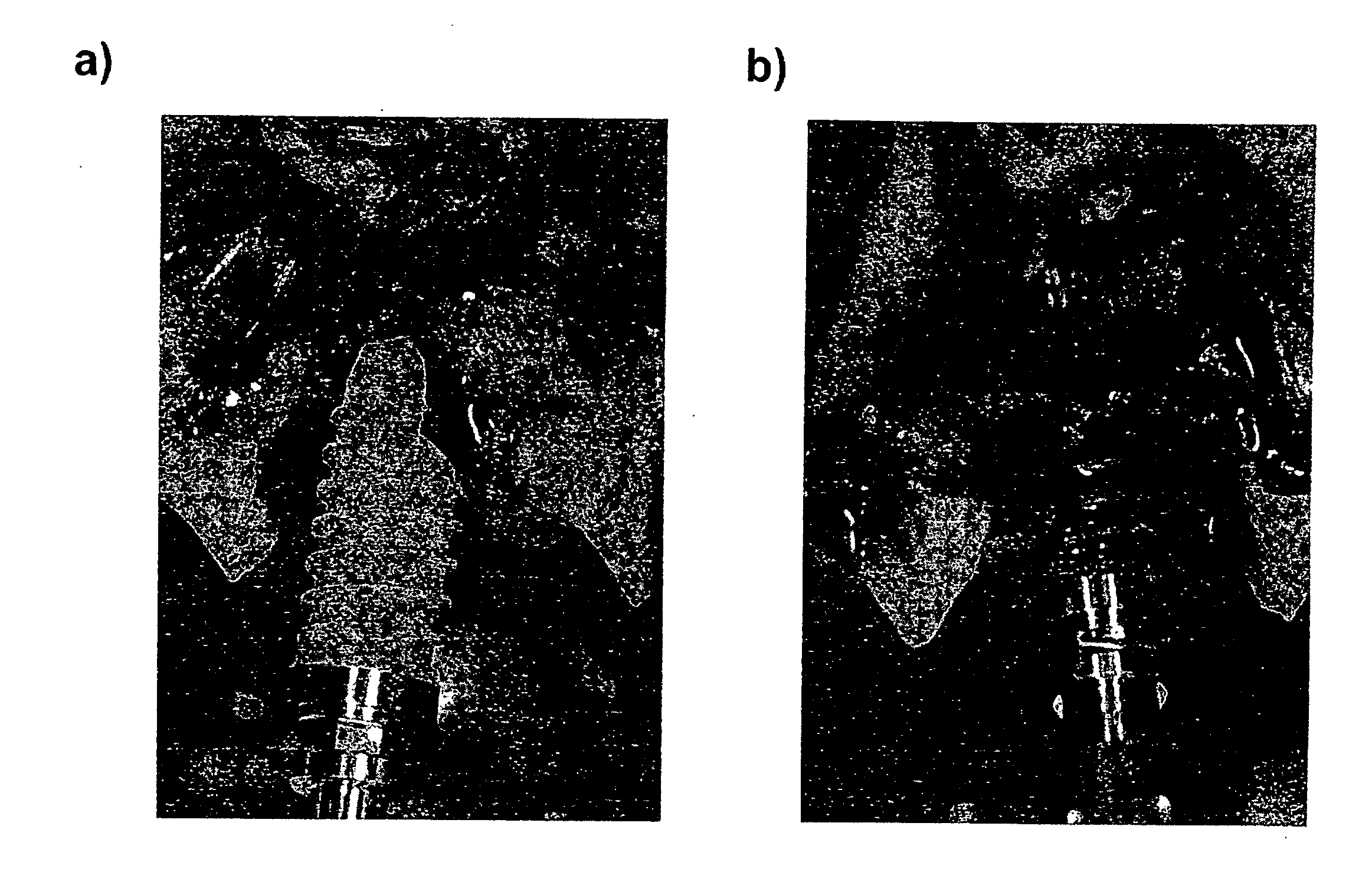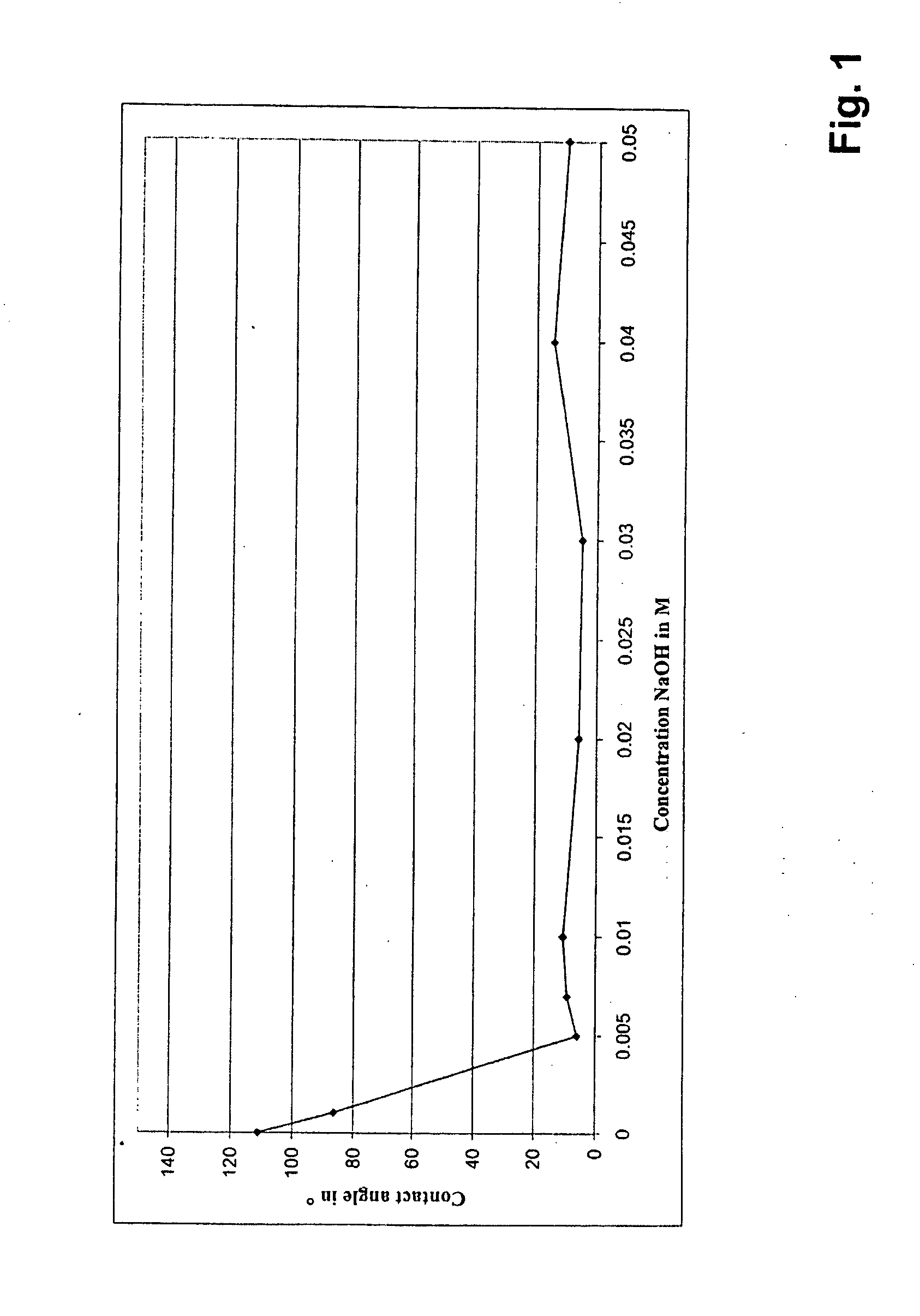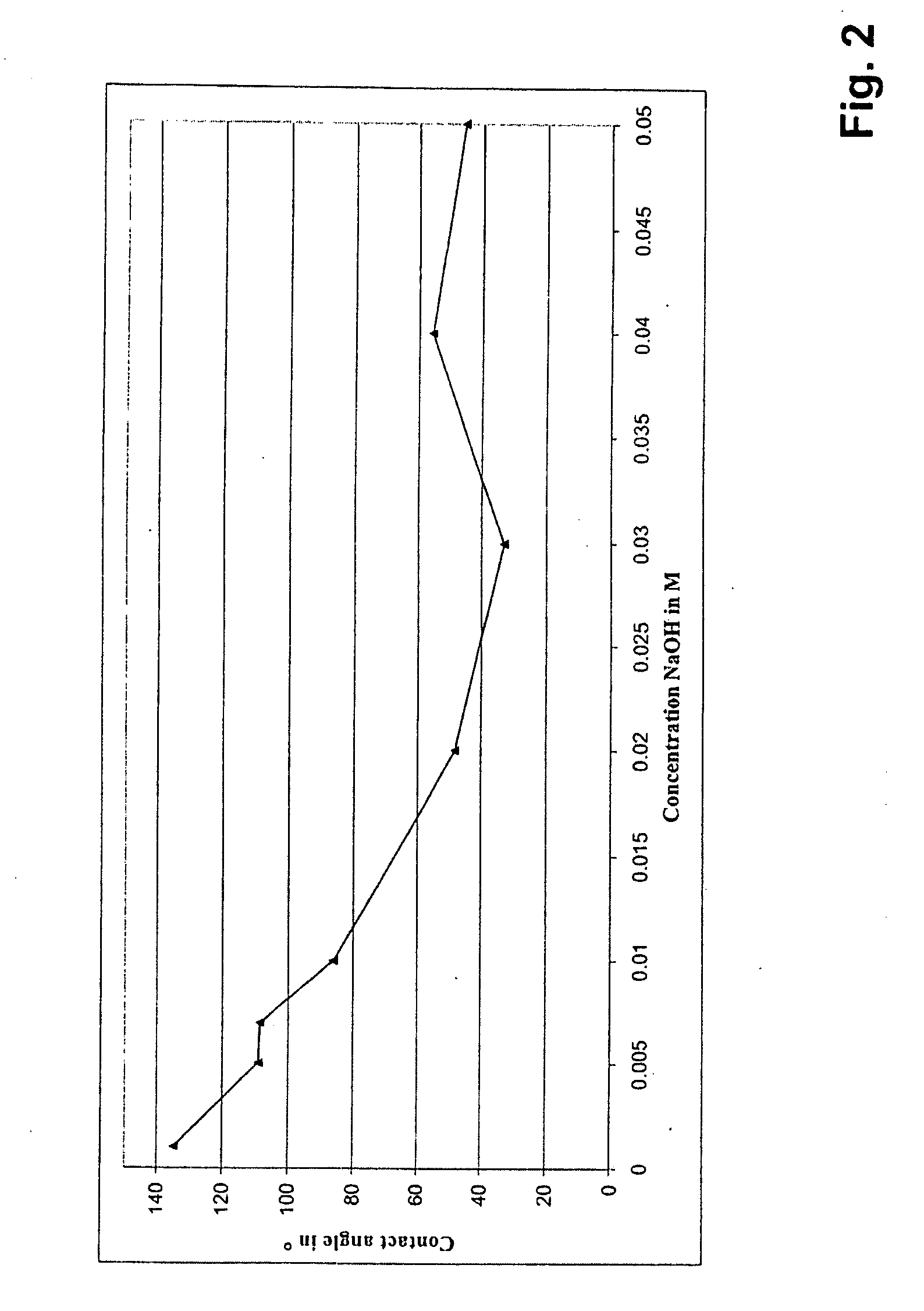Implant, in particular dental implant
a dental implant and implant technology, applied in dental implants, artificial teeth, packaging goods types, etc., can solve the problems of limited storage time in a saline solution, high production and packaging costs, and inability to always be possible, and achieve fast and lasting anchored in hard, good osteointegration or osseointegration, and better and faster osseointegration
- Summary
- Abstract
- Description
- Claims
- Application Information
AI Technical Summary
Benefits of technology
Problems solved by technology
Method used
Image
Examples
example 1
[0072]A common form of a dental implant in the form of a screw of a diameter of 3.5 mm and of a length of 10 mm was produced from titanium cp degree 4. The surface to be inserted into the bone was then provided with a macro-roughness, by sand-blasting it with a particle of Al2O3 at about 4 bar. Subsequently, the roughened surface was etched at high temperature with a mixture of hydrochloric acid and sulphuric acid, in order to obtain a micro-structuring. After the etching, the implant was treated with pure / deionised water and then washed and rinsed in deionised water. Subsequently, the implant was immersed into an aqueous 0.05 M NaOH-solution for 10 seconds. After the surface was air-dried, one was able to qualitatively determine, by complete wetting with a drop of water, that the surface behaves in a hydrophilic manner.
example 2
[0073]A common form of a dental implant in the form of a screw of a diameter of 3.5 mm and of a length of 10 mm was produced from titanium cp degree 4. The surface to be inserted into the bone was then provided with a macro-roughness, by sand-blasting it with a particle of Al2O3 at about 4 bar. Subsequently, the roughened surface was etched at high temperature with a mixture of hydrochloric acid and sulphuric acid, in order to obtain a micro-structuring. After the etching, the implant was treated with pure / deionised water and then washed and rinsed in deionised water. Subsequently, the implant was immersed into an aqueous 0.05 M NaOH-solution for 10 seconds. After the surface was air-dried, the implant was stored at room temperature in air for 4 weeks. Subsequently, one was able to qualitatively determine, by complete wetting with a drop of water, that the surface behaves in a hydrophilic manner.
example 3
[0074]A common form of a dental implant in the form of a screw of a diameter of 3.5 mm and of a length of 10 mm was produced from titanium cp degree 4. The surface to be inserted into the bone was then provided with a macro-roughness, by sand-blasting it with a particle of Al2O3 at about 4 bar. Subsequently, the roughened surface was etched at high temperature with a mixture of hydrochloric acid and sulphuric acid, in order to obtain a micro-structuring. After the etching, the implant was treated with pure / deionised water and then washed and rinsed in deionised water. Subsequently, the implant was immersed into an 0.05 M NaOH for 10 seconds. Subsequently, the implant was stored in an aqueous 0.01M NaOH-solution at room temperature for 4 weeks. The NaOH-solution was rinsed with N2 beforehand, in order to remove CO2 from the solution and to avoid a formation of carbonate during storage. Subsequently, one was able to qualitatively determine, by complete wetting with a drop of water, th...
PUM
| Property | Measurement | Unit |
|---|---|---|
| Temperature | aaaaa | aaaaa |
| Pressure | aaaaa | aaaaa |
| Angle | aaaaa | aaaaa |
Abstract
Description
Claims
Application Information
 Login to View More
Login to View More - R&D
- Intellectual Property
- Life Sciences
- Materials
- Tech Scout
- Unparalleled Data Quality
- Higher Quality Content
- 60% Fewer Hallucinations
Browse by: Latest US Patents, China's latest patents, Technical Efficacy Thesaurus, Application Domain, Technology Topic, Popular Technical Reports.
© 2025 PatSnap. All rights reserved.Legal|Privacy policy|Modern Slavery Act Transparency Statement|Sitemap|About US| Contact US: help@patsnap.com



